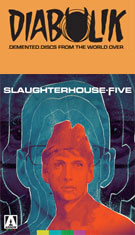
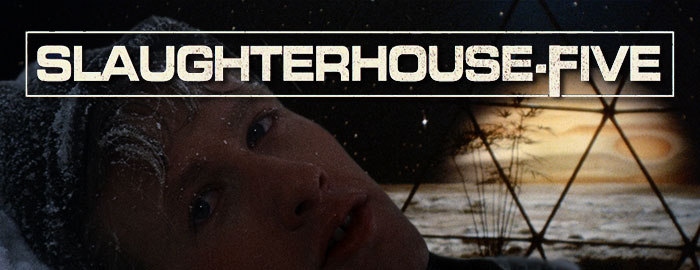


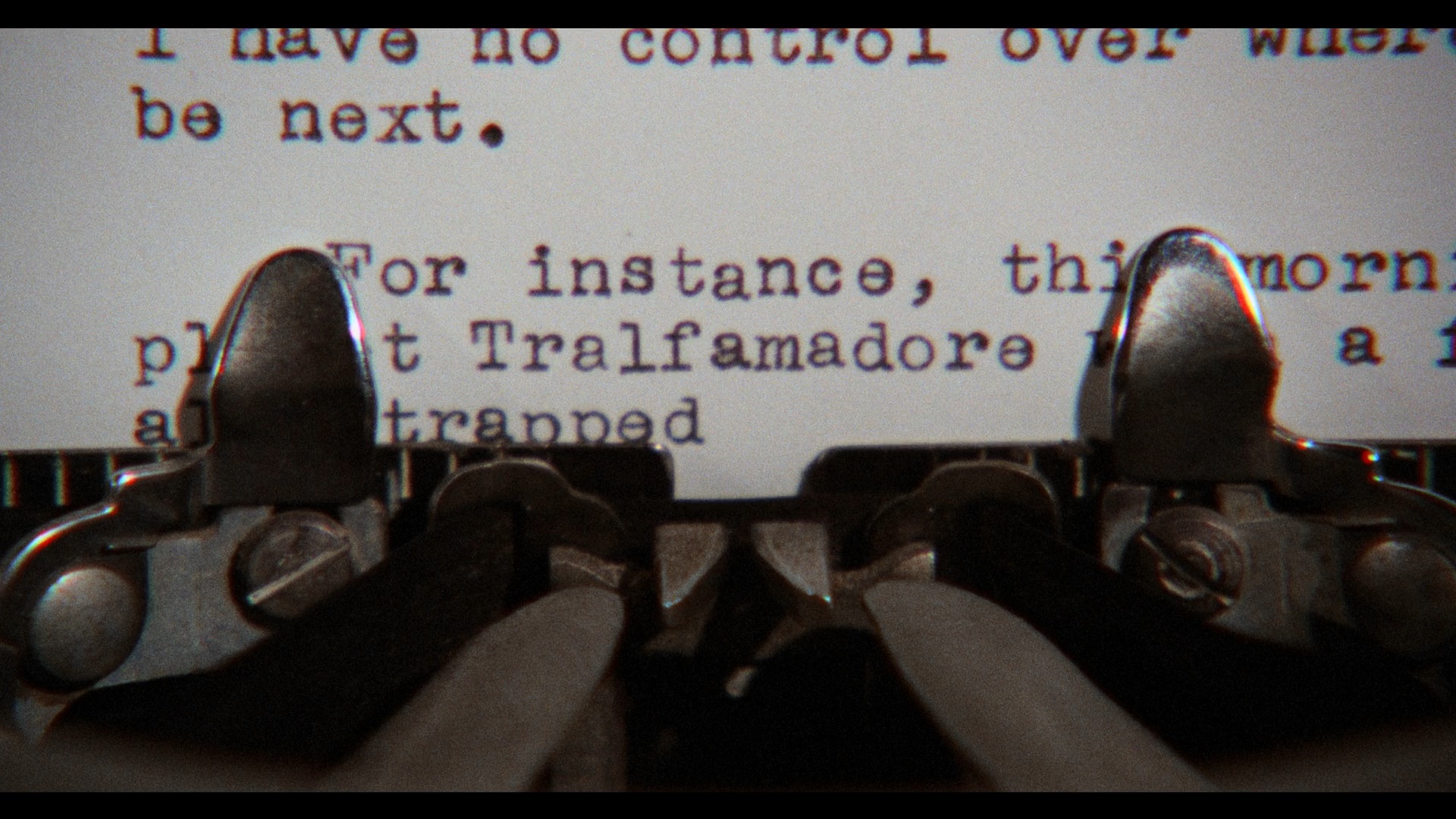 a few brave souls have attempted to translate the full-length novels of Kurt Vonnegut to the screen, and even fewer
a few brave souls have attempted to translate the full-length novels of Kurt Vonnegut to the screen, and even fewer 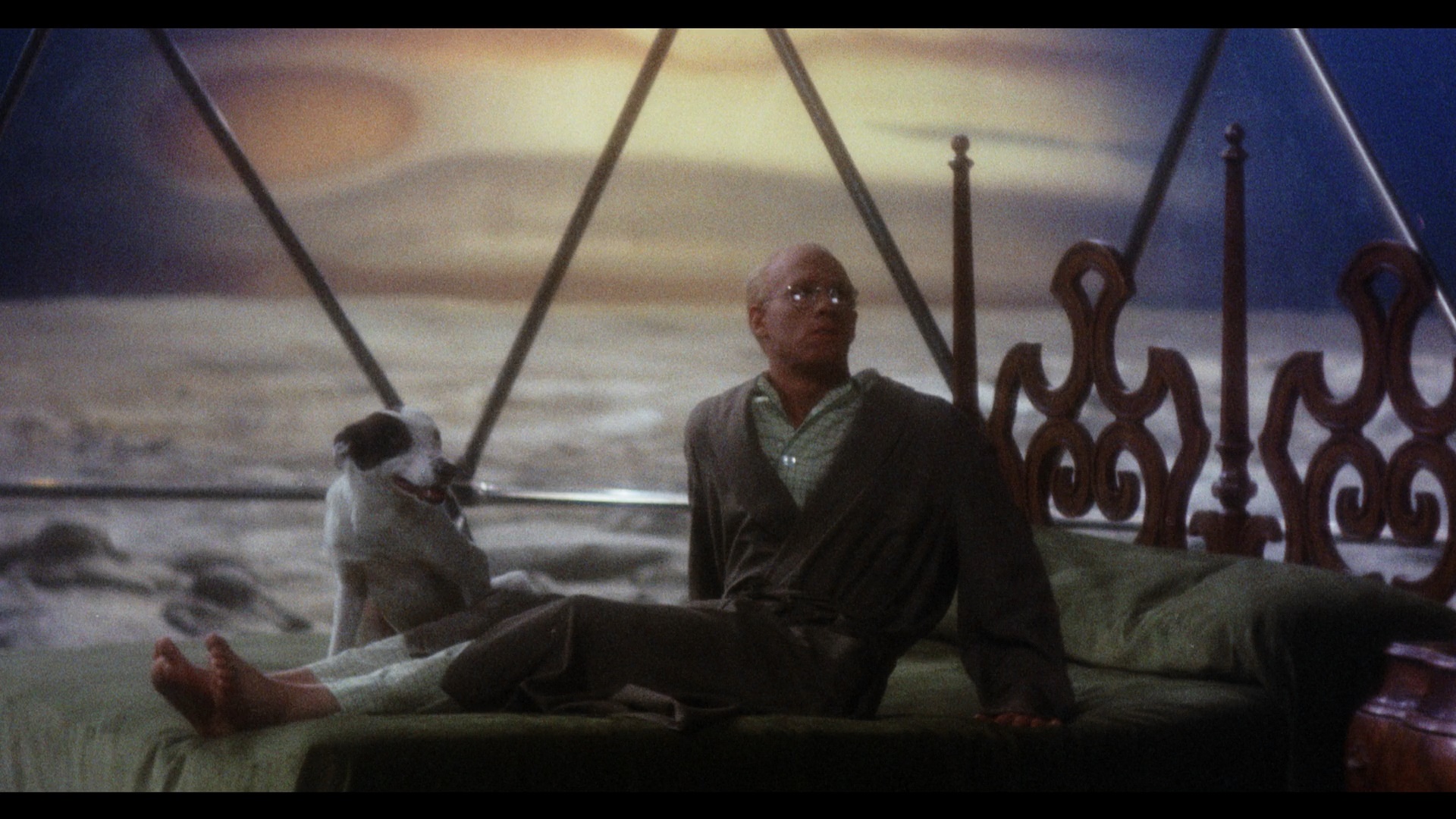 have managed to pull it off successfully. At the top of that select company stands Slaughterhouse-Five, a surprisingly effective translation of his 1969 novel (and one immediately notorious for the difficulty of adapting it). The author himself was thrilled with the result by director George Roy Hill (hot off the success of Butch Cassidy and the Sundance Kid) and screenwriter Stephen Geller (The Valachi Papers), which comes up with ingenious methods of visualizing Vonnegut's concept of a main character who has become "unstuck in time."
have managed to pull it off successfully. At the top of that select company stands Slaughterhouse-Five, a surprisingly effective translation of his 1969 novel (and one immediately notorious for the difficulty of adapting it). The author himself was thrilled with the result by director George Roy Hill (hot off the success of Butch Cassidy and the Sundance Kid) and screenwriter Stephen Geller (The Valachi Papers), which comes up with ingenious methods of visualizing Vonnegut's concept of a main character who has become "unstuck in time."  search of the following it deserves. Hollywood was at its most daring and experimental at the time,
search of the following it deserves. Hollywood was at its most daring and experimental at the time, 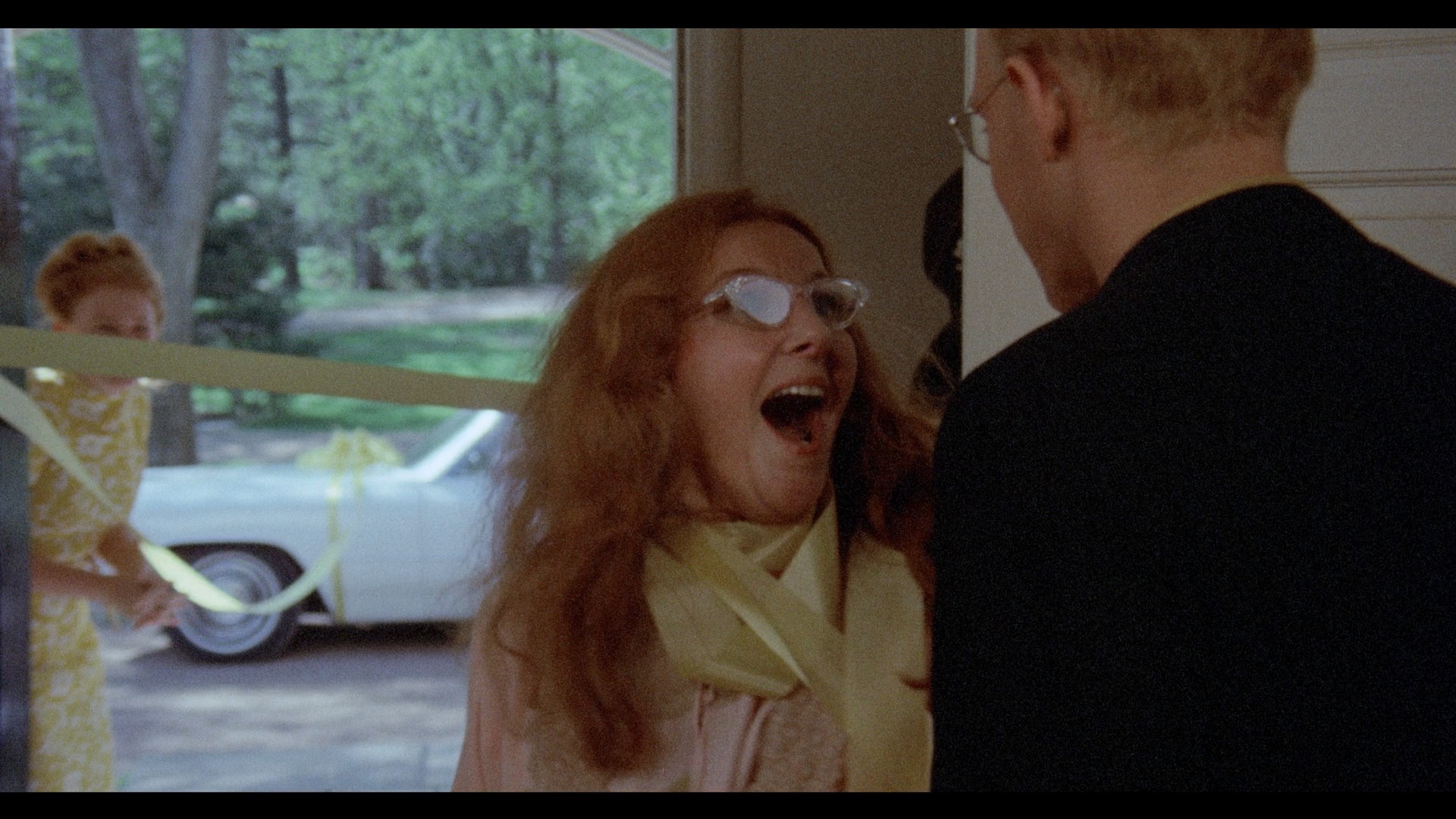 but this one still stands out with its potent mixture of anti-war humanity and unhinged absurdity. The deliberately chosen, mostly unknown (at the time) cast members all do excellent work and feel convincing in their roles, with Sacks disappearing into his role in such an unassuming fashion that one can only wonder what other leading parts he could have gotten had he been so inclined. It's easily the most idiosyncratic film by Hill, who had come off of a series of big studio films (also including Thoroughly Modern Millie and Hawaii) and would follow this up with his most award-laden effort, The Sting. However, it's also remarkably consistent with his output in its study of the American male psyche, something that would continue to evolve in later films like The Great Waldo Pepper, Slap Shot, and the closest spiritual cousin to this film, The World According to Garp.
but this one still stands out with its potent mixture of anti-war humanity and unhinged absurdity. The deliberately chosen, mostly unknown (at the time) cast members all do excellent work and feel convincing in their roles, with Sacks disappearing into his role in such an unassuming fashion that one can only wonder what other leading parts he could have gotten had he been so inclined. It's easily the most idiosyncratic film by Hill, who had come off of a series of big studio films (also including Thoroughly Modern Millie and Hawaii) and would follow this up with his most award-laden effort, The Sting. However, it's also remarkably consistent with his output in its study of the American male psyche, something that would continue to evolve in later films like The Great Waldo Pepper, Slap Shot, and the closest spiritual cousin to this film, The World According to Garp.  on Portrait of Jennie for example as he charts the genesis of this unusual Hollywood production including its
on Portrait of Jennie for example as he charts the genesis of this unusual Hollywood production including its 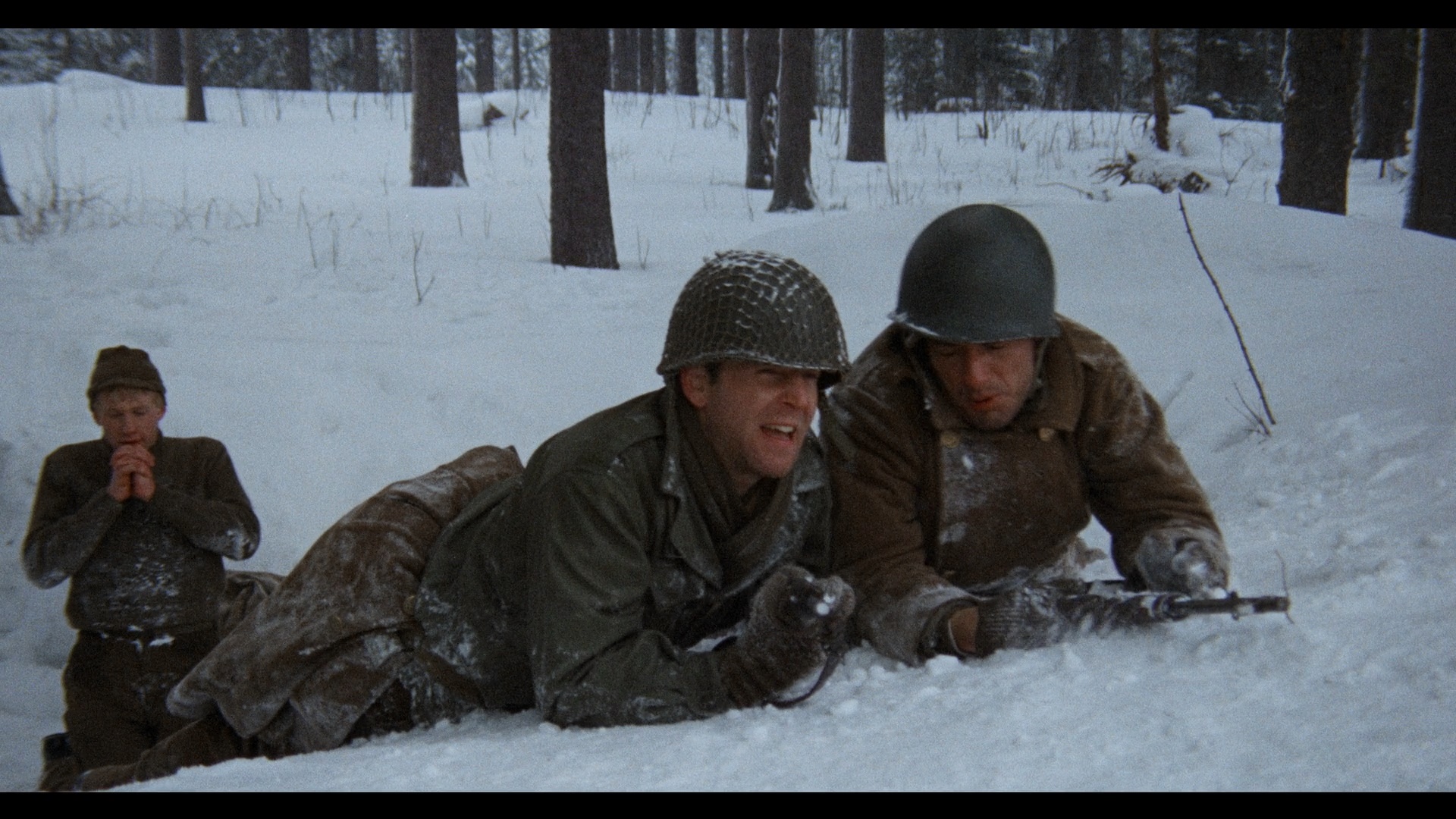 relationship to the source novel, Vonnegut's background, Hill's status as a filmmaker at the time in the wake of his breakthrough hit, the novel treatment of sci-fi elements by both the source material and the script, and the relationships to other films and novels by the primary creators. He's open about the challenging nature of this particular track but does a commendable job of tackling a title that can easily prove intimidating. Several featurettes from Ballyhoo Motion Pictures comprise the bulk of the extras starting with "And So It Goes" (21m5s) as critic Kim Newman ties the film to other time-skipping titles like Je t'aime, je t'aime and touches on other Vonnegut adaptations for the large and small screens while parsing through the author's usage of sci-fi tropes. In "Pilgrim’s Progress: Playing Slaughterhouse-Five" (14m7s), Perry King highlights his memories of his first exposure to Hill, his early acting experience at Juilliard, the unusual identity of Hill's cameo appearance, and the differences between working closely with a director back then versus the more austere "video village" approach now. "Only on Earth: Presenting Slaughterhouse-Five" (8m41s) is a new video interview with Rocky Lang, son of executive producer Jennings Lang, about the film’s distribution and general background as he covers his father's fondness for the film, the challenge of recreating Dresden before its
relationship to the source novel, Vonnegut's background, Hill's status as a filmmaker at the time in the wake of his breakthrough hit, the novel treatment of sci-fi elements by both the source material and the script, and the relationships to other films and novels by the primary creators. He's open about the challenging nature of this particular track but does a commendable job of tackling a title that can easily prove intimidating. Several featurettes from Ballyhoo Motion Pictures comprise the bulk of the extras starting with "And So It Goes" (21m5s) as critic Kim Newman ties the film to other time-skipping titles like Je t'aime, je t'aime and touches on other Vonnegut adaptations for the large and small screens while parsing through the author's usage of sci-fi tropes. In "Pilgrim’s Progress: Playing Slaughterhouse-Five" (14m7s), Perry King highlights his memories of his first exposure to Hill, his early acting experience at Juilliard, the unusual identity of Hill's cameo appearance, and the differences between working closely with a director back then versus the more austere "video village" approach now. "Only on Earth: Presenting Slaughterhouse-Five" (8m41s) is a new video interview with Rocky Lang, son of executive producer Jennings Lang, about the film’s distribution and general background as he covers his father's fondness for the film, the challenge of recreating Dresden before its 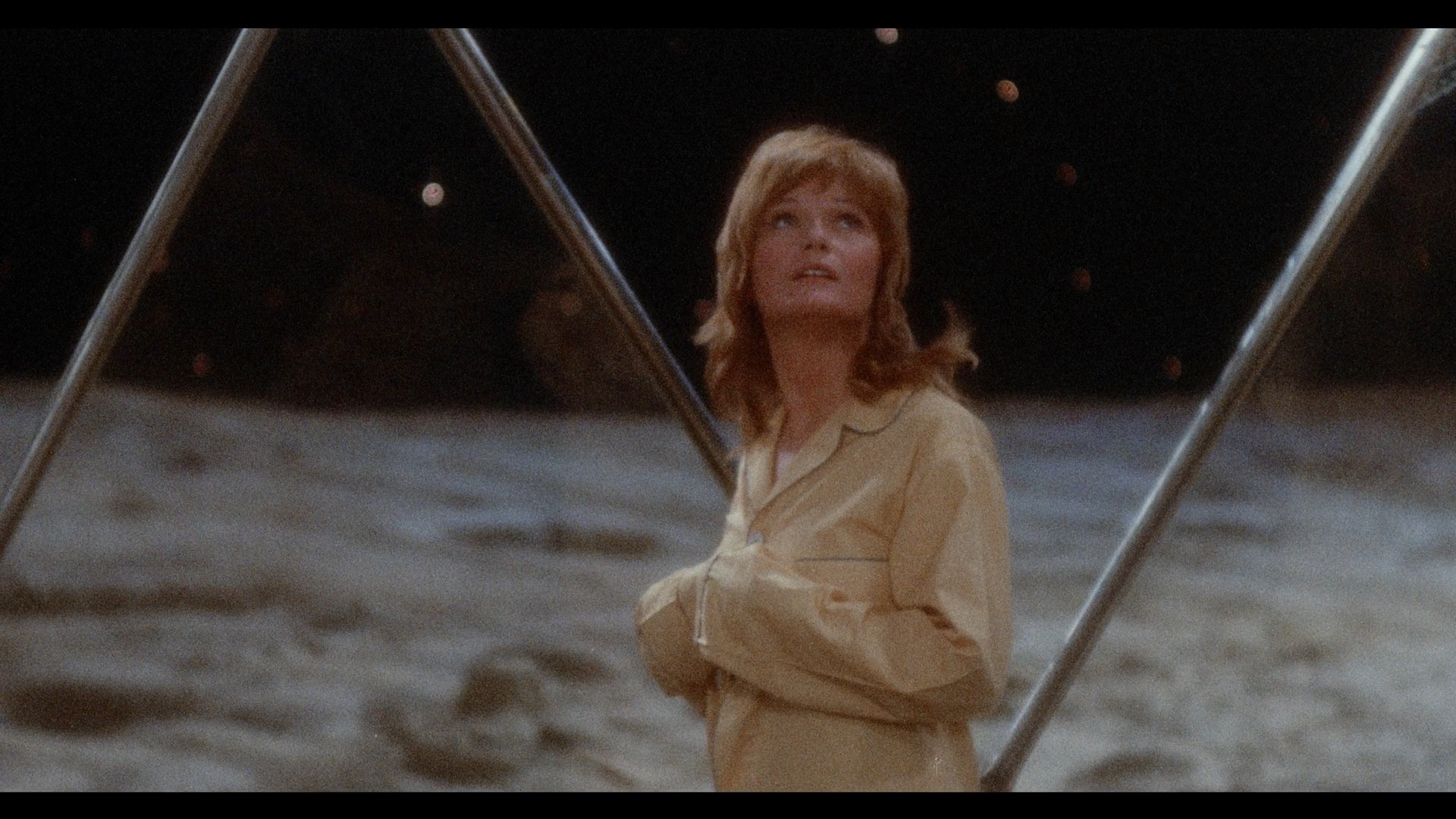 destruction, and other key films of the era. In "Unstuck in Time: Documenting Slaughterhouse-Five" (14m38s),
destruction, and other key films of the era. In "Unstuck in Time: Documenting Slaughterhouse-Five" (14m38s), 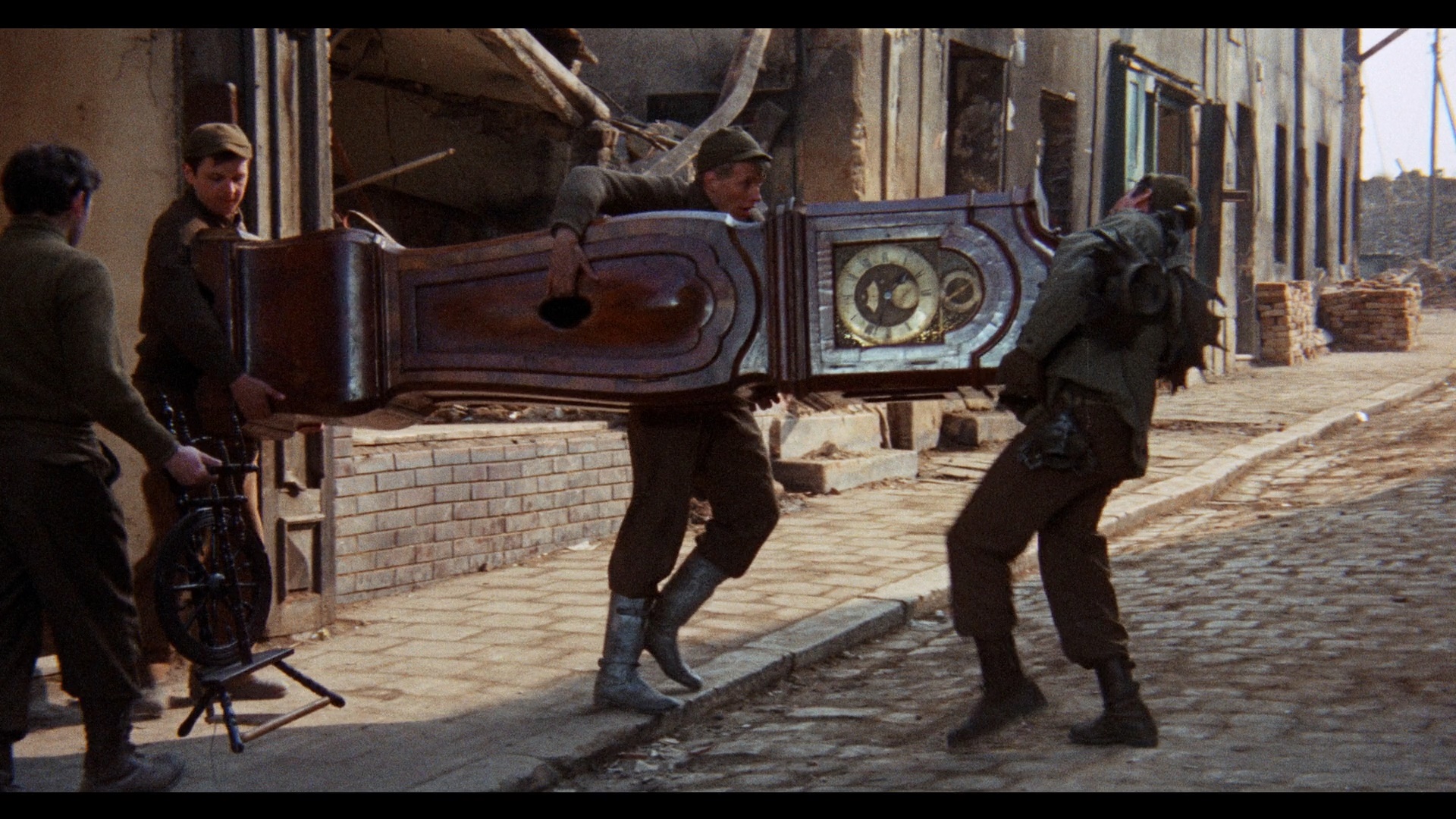 behind-the-scenes filmmaker/producer Robert Crawford, Jr. details the process of optioning the book before its publication, the process of bringing the property to Lang, the casting (including a fascinating potential role for Vonnegut that didn't get past the screen test phase), and the deals made to bring it to life with Hill committing to future films for the studio. Finally, "Eternally Connected: Composing Slaughterhouse-Five"(11m36s) brings in film music historian Daniel Schweiger to analyze the use of classical music here (versus 2001: A Space Odyssey) as an extension of the film's personal, introspective approach designed to keep the viewer thinking, particularly through its use of Bach. A standard def theatrical trailer is also included and reflects the less than focused marketing campaign behind the film, which also resulted in a number of underwhelming poster and home video cover designs over the years. That said, the new reversible sleeve is a welcome step in the right direction with a new design by Corey Brickley that easily surpasses its predecessors.
behind-the-scenes filmmaker/producer Robert Crawford, Jr. details the process of optioning the book before its publication, the process of bringing the property to Lang, the casting (including a fascinating potential role for Vonnegut that didn't get past the screen test phase), and the deals made to bring it to life with Hill committing to future films for the studio. Finally, "Eternally Connected: Composing Slaughterhouse-Five"(11m36s) brings in film music historian Daniel Schweiger to analyze the use of classical music here (versus 2001: A Space Odyssey) as an extension of the film's personal, introspective approach designed to keep the viewer thinking, particularly through its use of Bach. A standard def theatrical trailer is also included and reflects the less than focused marketing campaign behind the film, which also resulted in a number of underwhelming poster and home video cover designs over the years. That said, the new reversible sleeve is a welcome step in the right direction with a new design by Corey Brickley that easily surpasses its predecessors. ![]()